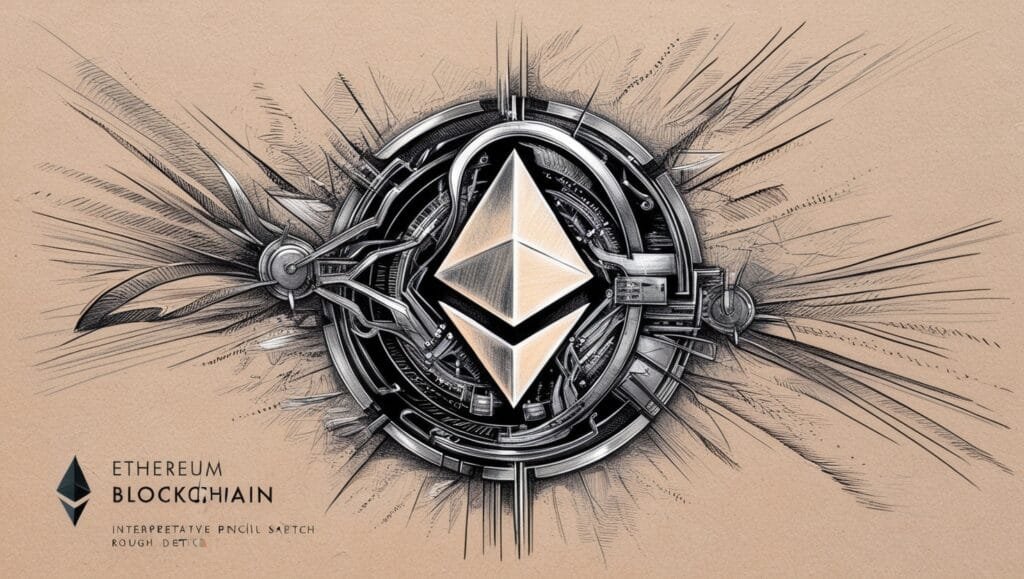## Introduction:
What is Ethereum Blockchain ? : Ethereum blockchain has revolutionized the world of cryptocurrencies and decentralized applications. Created by Vitalik Buterin, this innovative platform goes beyond simple transactions, offering a robust foundation for smart contracts and decentralized applications. Ethereum’s impact extends far beyond the realm of finance, causing a revolution in various industries and paving the way for Web 3.0.
As we delve into the functionality of Ethereum, we’ll explore its core concepts, the power of programmable money, and its consensus mechanism. We’ll also examine how Ethereum addresses scalability challenges and the role of gas fees in its ecosystem. By the end of this article, readers will have a comprehensive understanding of Ethereum’s distributed network and its potential to shape the future of digital interactions.
## Understanding Ethereum’s Core Concepts
To grasp the functionality of Ethereum blockchain, it’s essential to delve into its core concepts. These fundamental elements form the backbone of this innovative platform, enabling its unique capabilities and fostering the development of decentralized applications.
## Blockchain Technology in Ethereum
Ethereum utilizes blockchain technology to create and maintain secure digital ledgers. This distributed ledger stores information in blocks, each containing encoded data from the previous block and new information. This creates an unalterable chain of information, with identical copies distributed throughout the network. The blockchain’s structure ensures transparency and security, making it resistant to tampering and fraud.
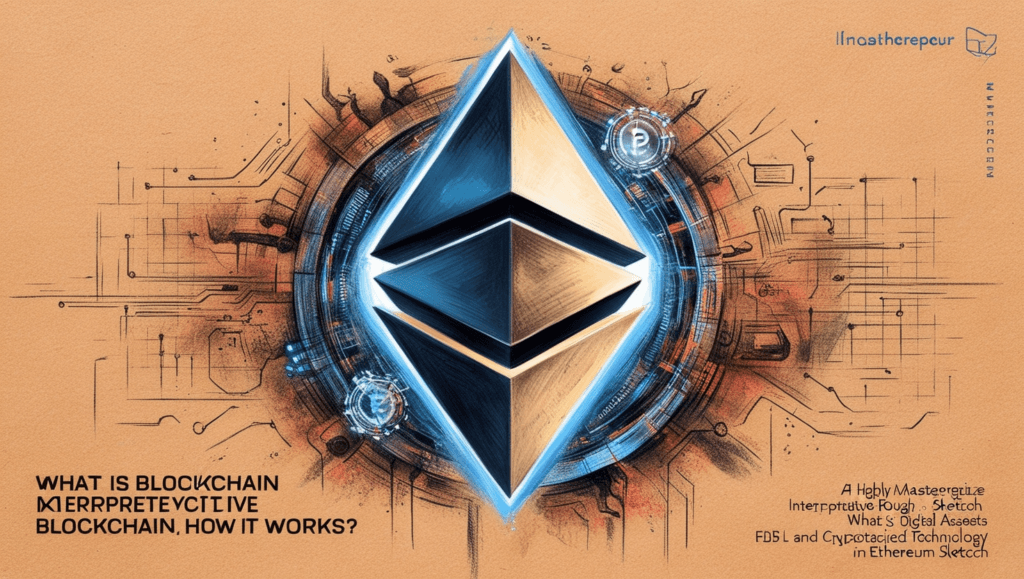
The Ethereum blockchain consists of two key components: a hash-linked chain of blocks and a state trie. The hash chain is a cryptographically-linked series of immutable blocks that contain the record of all executed transactions on the network. Each block includes the hash of the previous block within its header, forming a continuous chain of information.
## Ether: The Native Cryptocurrency
Ether (ETH) serves as the native cryptocurrency of the Ethereum platform. Created in 2015, Ether is often referred to as the fuel for operating the Ethereum network. It has multiple uses within the ecosystem:
- Payment for goods and services
- Support for application development on the Ethereum network
- Incentive for network participants
Ether comes into existence through the validation of transactions on the Ethereum platform, a process previously known as mining. With the transition to proof-of-stake, validators now receive Ether as a reward for their work in maintaining and securing the blockchain.
To obtain Ether, individuals can:
- Purchase it on an exchange using fiat currency
- Exchange it for Bitcoin on compatible exchanges
- Receive it as a transfer from another person or entity
- Earn it by participating in network validation
## Gas and Transaction Fees
Gas is a crucial concept in the Ethereum ecosystem, representing the fee required to successfully conduct a transaction or execute a smart contract on the platform. These fees are priced in tiny fractions of Ether called gwei (10^-9 ETH). Gas serves several important functions:
- Compensating validators for their work in maintaining and securing the blockchain
- Preventing network congestion by discouraging unnecessary transactions
- Allocating computational resources efficiently
Gas fees are determined by supply and demand for the network’s validation requests. The exact price of gas fluctuates based on network capacity and transaction complexity. After the implementation of proof-of-stake in September 2022, a portion of the gas fee became the reward for staking ETH and participating in validation.
The calculation of gas fees underwent a change in August 2021, introducing a base fee set by the network and a priority fee (tip) for validators. The formula for gas fees is:
Units of Gas Used * (Base Fee + Priority Fee)
Understanding these core concepts provides a foundation for comprehending Ethereum’s functionality and its potential to shape the future of decentralized applications and Web 3.0 technologies.
## The Power of Programmable Money
Ethereum blockchain has revolutionized the concept of programmable money, enabling a new era of financial innovation and decentralized applications. This groundbreaking technology, introduced by Vitalik Buterin, has paved the way for smart contracts, decentralized applications (DApps), and tokenization, transforming the way we interact with digital assets and conduct transactions.
## Smart Contracts Explained
Smart contracts are self-executing agreements encoded directly into lines of code on the Ethereum blockchain. These contracts automatically enforce and execute the terms of an agreement when specific conditions are met, eliminating the need for intermediaries and increasing efficiency and security in transactions. For example, a smart contract can automatically release payment to a seller only after the buyer receives a product, ensuring a fair and transparent exchange.
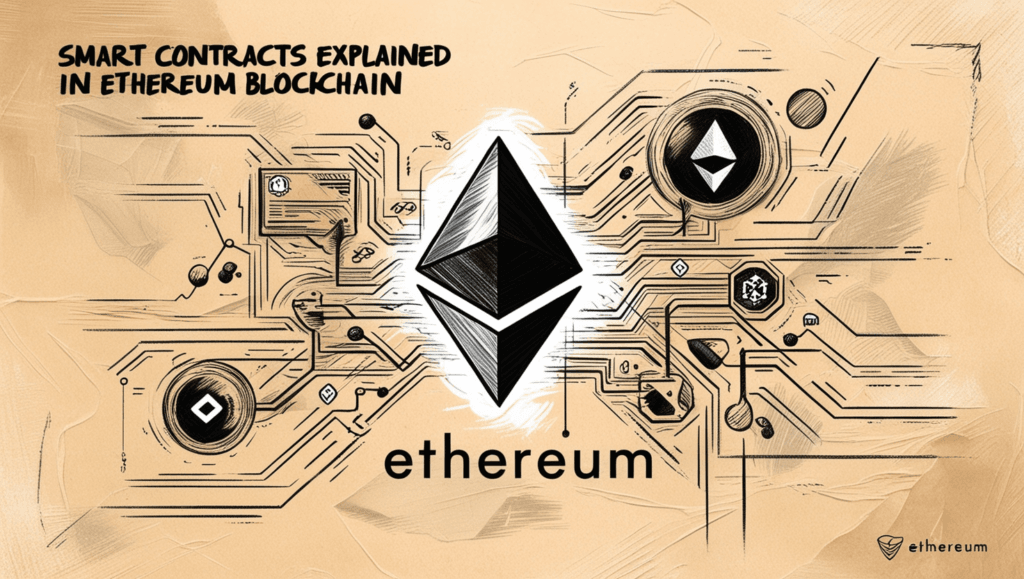
The Ethereum Virtual Machine (EVM) runs these smart contracts, allowing for the deployment of complex, programmable agreements on top of the consensus layer. This has opened up a world of possibilities for developers to create innovative applications that leverage the power of blockchain technology.
## Decentralized Applications (DApps)
Decentralized applications, or DApps, are digital applications that run on a decentralized peer-to-peer network, such as the Ethereum blockchain. Unlike traditional applications that rely on centralized servers, DApps operate on a distributed network, free from the control and interference of a single authority. This decentralized nature provides several benefits, including enhanced privacy, resistance to censorship, and improved security.
DApps have been developed for various purposes, including wallets, exchanges, gaming, personal finance, and social media. For instance, CryptoKitties, a popular blockchain-based game, allows users to buy, sell, and breed virtual cats using smart contracts. Another example is Uniswap, a decentralized exchange protocol built on Ethereum that enables users to trade cryptocurrencies without intermediaries.
## Tokenization on Ethereum
Tokenization has emerged as a powerful application of blockchain technology, with Ethereum leading the way in this innovative space. The process involves converting assets or utilities into digital tokens, bridging the gap between traditional finance and decentralized finance (DeFi). These digital tokens represent a share or fragment of an underlying asset, making them easily tradeable and manageable on the blockchain.
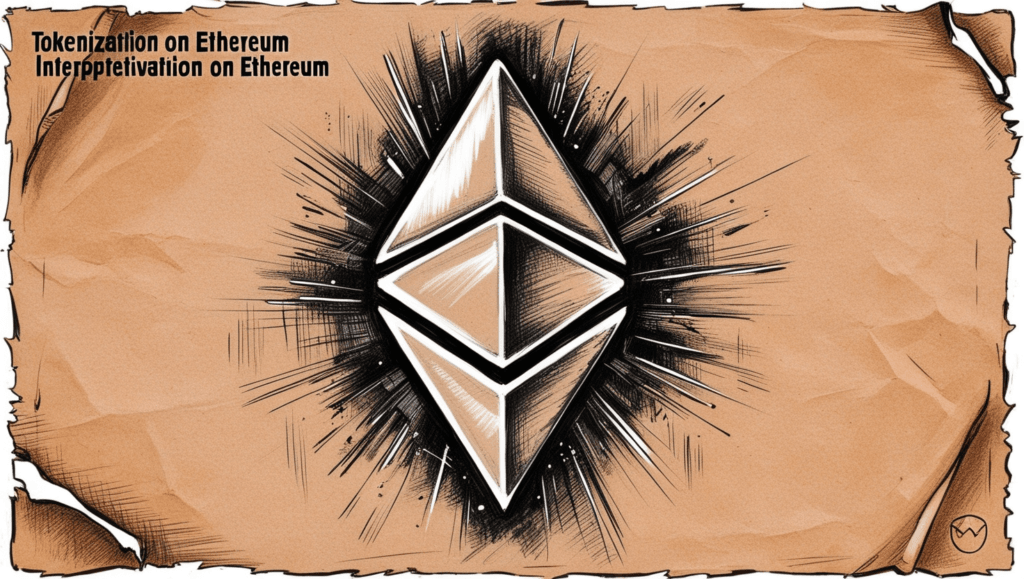
The Ethereum community has developed several token standards to represent various asset types, with ERC-20 being the most widely used for fungible tokens. Recently, the community approved ERC-3643 as the first tokenization standard for real-world assets (RWAs), enabling the tokenization of physical or financial assets such as real estate and art.
Tokenization offers numerous benefits, including enhanced liquidity, fractional ownership, and increased transparency. For instance, it allows for the fractionalization of traditionally illiquid assets, democratizing access to investments that were previously out of reach for many individuals. Additionally, the transparency provided by blockchain technology enables anyone to verify and authenticate tokens with their metadata, reducing the risk of fraud and increasing trust in the system.
As the Ethereum ecosystem continues to evolve, the power of programmable money is expected to drive further innovation in various industries, reshaping the future of finance and digital interactions in the Web 3.0 era.
## Ethereum’s Consensus Mechanism
The transition from Proof-of-Work (PoW) to Proof-of-Stake (PoS) has been a significant milestone in Ethereum’s evolution, enhancing its scalability and sustainability. This shift, known as “The Merge,” took place in September 2022 and marked a crucial step towards realizing the vision of Ethereum 2.0 and Web 3.0.
## Proof-of-Work to Proof-of-Stake Transition
The transition to PoS addressed several limitations of the PoW consensus mechanism. Under PoW, Ethereum’s annual energy consumption was estimated at 50.63 terawatt-hours (TWh), comparable to Singapore’s electricity usage 1. This high energy consumption not only raised environmental concerns but also limited the network’s scalability. The switch to PoS has drastically reduced Ethereum’s energy consumption by approximately 99.95%, making it more environmentally friendly and sustainable .
## Validators and Staking
In the PoS model, validators have replaced miners as the backbone of the Ethereum network. To become a validator, participants must stake 32 ETH, which serves as collateral and a source of rewards. Validators are responsible for proposing new blocks, attesting to the validity of blocks proposed by others, and maintaining the integrity of the blockchain.
The staking process has made Ethereum more accessible and decentralized. Unlike PoW, which required specialized hardware and significant energy resources, PoS allows anyone with 32 ETH to participate in securing the network. This has lowered the entry barrier and increased the number of network participants, enhancing Ethereum’s security and decentralization.
Validators earn rewards for their contributions to the network. These rewards come from new ETH issuance, transaction fees, and maximal extractable value (MEV). The reward rate is influenced by factors such as validator uptime and performance, with penalties imposed for malicious behavior or negligence.
## The Beacon Chain
The Beacon Chain, introduced in December 2020, played a crucial role in Ethereum’s transition to PoS. It served as the original proof-of-stake blockchain, running alongside the PoW Ethereum until The Merge. The Beacon Chain coordinated the network of stakers and ensured the soundness of the PoS consensus logic before its implementation on the Ethereum mainnet.
Post-Merge, the Beacon Chain became an integral part of Ethereum’s consensus layer, handling block gossip and consensus logic. It works in tandem with the execution layer, which manages transaction processing and Ethereum’s state. This two-layer structure enhances the network’s efficiency and scalability, paving the way for future improvements like sharding.
The Beacon Chain introduces several key concepts, including epochs, slots, and committees. An epoch consists of 32 slots, each lasting 12 seconds. Validators are assigned to committees and take turns proposing and attesting to blocks. This structure ensures a fair and secure consensus process, with checkpoints and finality mechanisms adding an extra layer of security to the network.
As Ethereum continues to evolve, the PoS consensus mechanism facilitated by the Beacon Chain sets the stage for further scalability solutions and the realization of a more efficient, secure, and sustainable blockchain ecosystem.
## Ethereum’s Impact on Industries
Ethereum blockchain has caused a revolution in various sectors, offering innovative solutions to longstanding challenges. Its distributed network and smart contract capabilities have paved the way for transformative applications across finance, supply chain management, and digital identity.
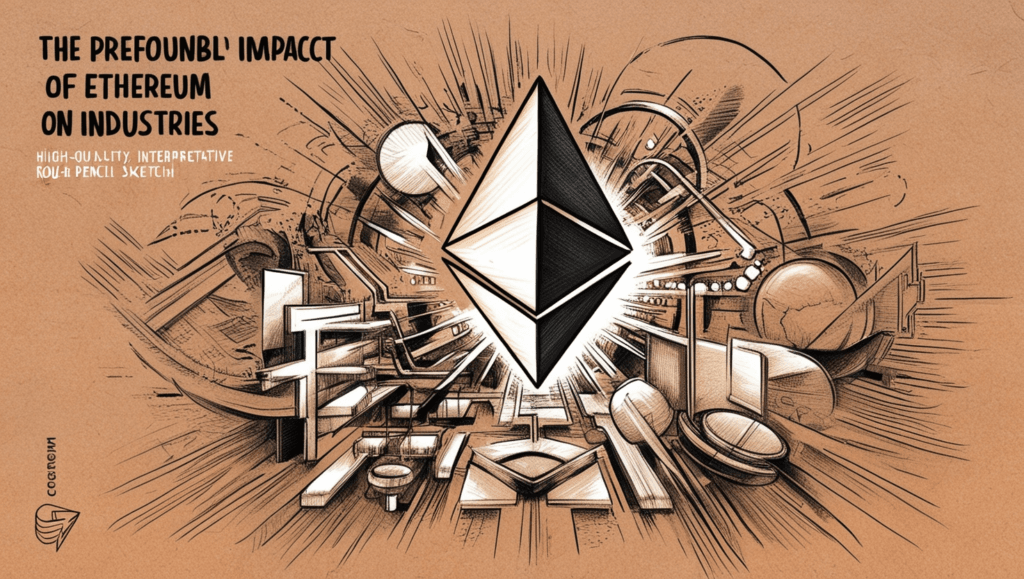
## Finance and Banking
The financial industry has recognized the transformative potential of Ethereum to generate new revenue streams, improve efficiency, and reduce risk in business operations. Ethereum enables more open, inclusive, and secure business networks, shared operating models, and more efficient processes in banking and finance 2. It allows for the issuance of digital securities within shorter periods, at lower unit costs, and with greater levels of customization 2.
Ethereum’s impact on finance extends to capital markets, where it unlocks easier, cheaper, and faster access to capital. It reduces barriers to issuance, enables peer-to-peer trading, and streamlines auditing and compliance 3. The technology has demonstrated disruptive economics, creating over 10x cost advantages against incumbent technologies 2.
## Supply Chain Management
Ethereum’s blockchain technology has the potential to revolutionize supply chain management by enhancing transparency, traceability, and efficiency. It enables accurate asset tracking, enhanced licensing of services, products, and software, and transparency into the provenance of consumer goods 4.
The implementation of Ethereum-based solutions in supply chains can bring traceability, transparency, and accountability to the movement of goods and commodities. This technology can be applied to logistics to make business processes more efficient and to cut costs from supply chain infrastructure 4.
A study of seven large U.S. corporations exploring blockchain in supply chain operations showed that the technology can enable faster and more cost-efficient product delivery, make products more traceable, streamline the financing process, and enhance coordination among buyers, suppliers, and banks 5.
## Digital Identity and Governance
Ethereum blockchain technology allows for the creation of more secure and efficient digital identity systems. It provides a unified, interoperable, and tamper-proof infrastructure with key benefits to enterprises, users, and IoT management systems 6.
The concept of self-sovereign identity, enabled by Ethereum, gives users control over their digital identities. This approach allows individuals to store their own identity data on their devices, choosing which pieces of information to share with validators without relying on a central repository 6.
In the realm of governance, Ethereum plays a vital role in creating more efficient systems. Decentralized Autonomous Organizations (DAOs) run on smart contracts on the Ethereum blockchain, with rules embedded in code that cannot be changed. This allows organizations to take a more community-driven approach to decision-making, protecting the organization’s integrity 7.
As Ethereum continues to evolve, its impact on these industries is expected to grow, driving further innovation and efficiency in the Web 3.0 era. The scalability solutions being developed for Ethereum will likely enhance its ability to handle larger volumes of transactions, making it even more suitable for enterprise-level applications across various sectors.
## Conclusion
Ethereum blockchain has proven to be a game-changer in the world of cryptocurrencies and decentralized applications. Its impact extends far beyond simple transactions, offering a robust foundation for smart contracts and DApps that are causing a revolution in various industries. The transition from Proof-of-Work to Proof-of-Stake has made Ethereum more sustainable and scalable, setting the stage for future improvements and the realization of Web 3.0.
As Ethereum continues to evolve, its potential to shape the future of digital interactions grows. The power of programmable money, coupled with the platform’s ability to enable innovative solutions across finance, supply chain management, and digital identity, makes it a driving force in the blockchain space. To stay updated on the latest developments and join a community of Ethereum enthusiasts, join Telegram. The ongoing advancements in Ethereum’s ecosystem promise exciting opportunities for developers, businesses, and users alike, paving the way for a more decentralized and efficient digital landscape.
FAQs
How does the Ethereum blockchain generate blocks?
The process of block generation in Ethereum involves miners competing to solve a cryptographic puzzle using the Proof-of-Work consensus algorithm. The first miner who successfully solves the puzzle has the privilege of creating the new block. This miner also receives Ether and transaction fees as a reward.
In what ways is Ethereum different from Bitcoin?
While both Ethereum and Bitcoin are built on blockchain technology and emphasize decentralization, their primary purposes differ. Bitcoin is mainly seen as a digital store of value. In contrast, Ethereum provides a platform that supports the execution of decentralized applications and smart contracts, making it more functional.
What are the key benefits of using the Ethereum blockchain?
Ethereum offers several advantages, including high availability due to its decentralized nature, which ensures the network does not suffer from downtime. It also offers enhanced privacy as it does not require users to disclose personal information for transactions. Additionally, Ethereum is considered highly secure and virtually unhackable.
What is the operating system of the Ethereum blockchain?
Ethereum operates as a decentralized blockchain platform that supports smart contracts. Ether, often abbreviated as ETH, is the native cryptocurrency of Ethereum. It ranks second only to Bitcoin in terms of market capitalization and is part of an open-source software ecosystem.
